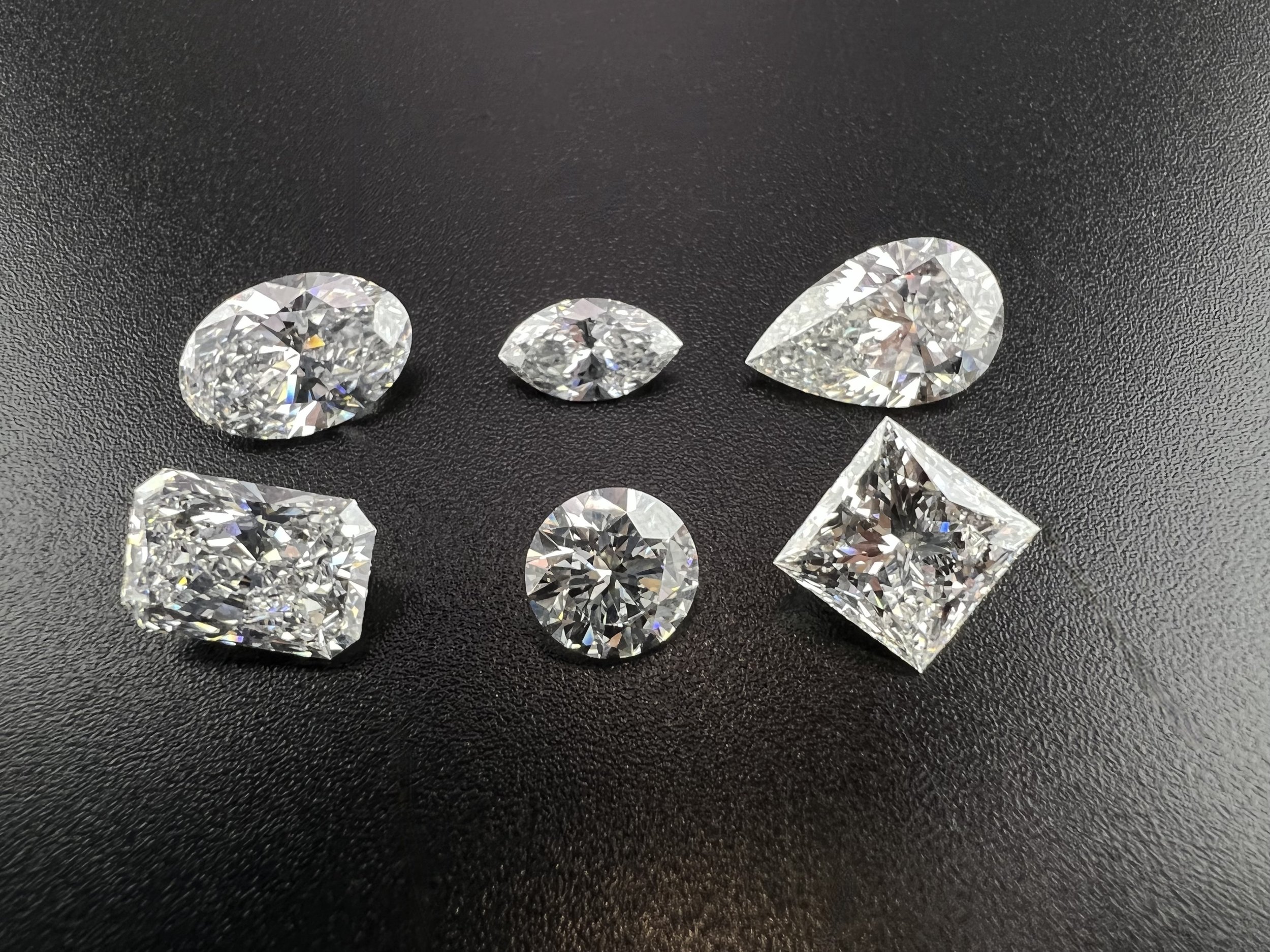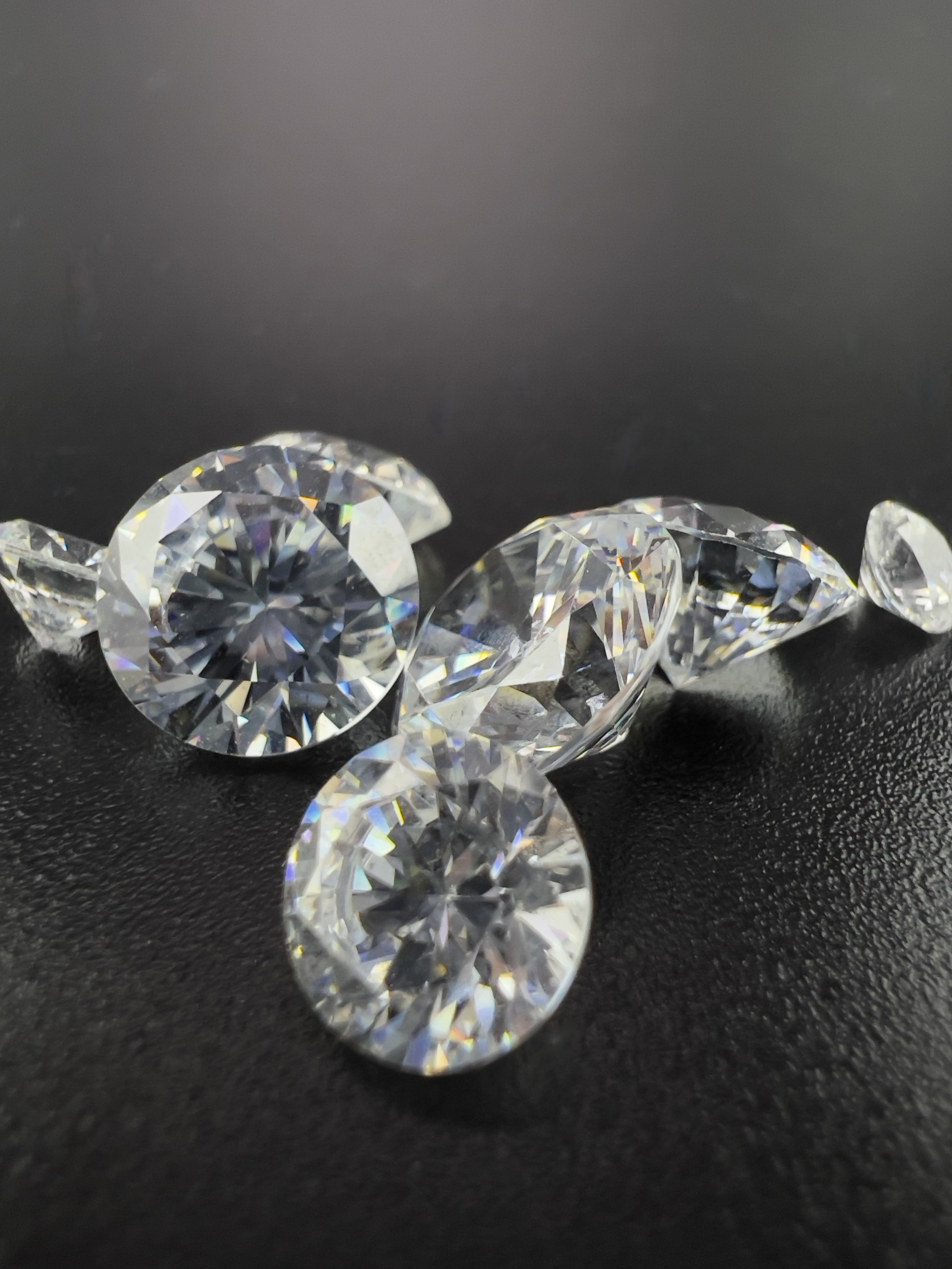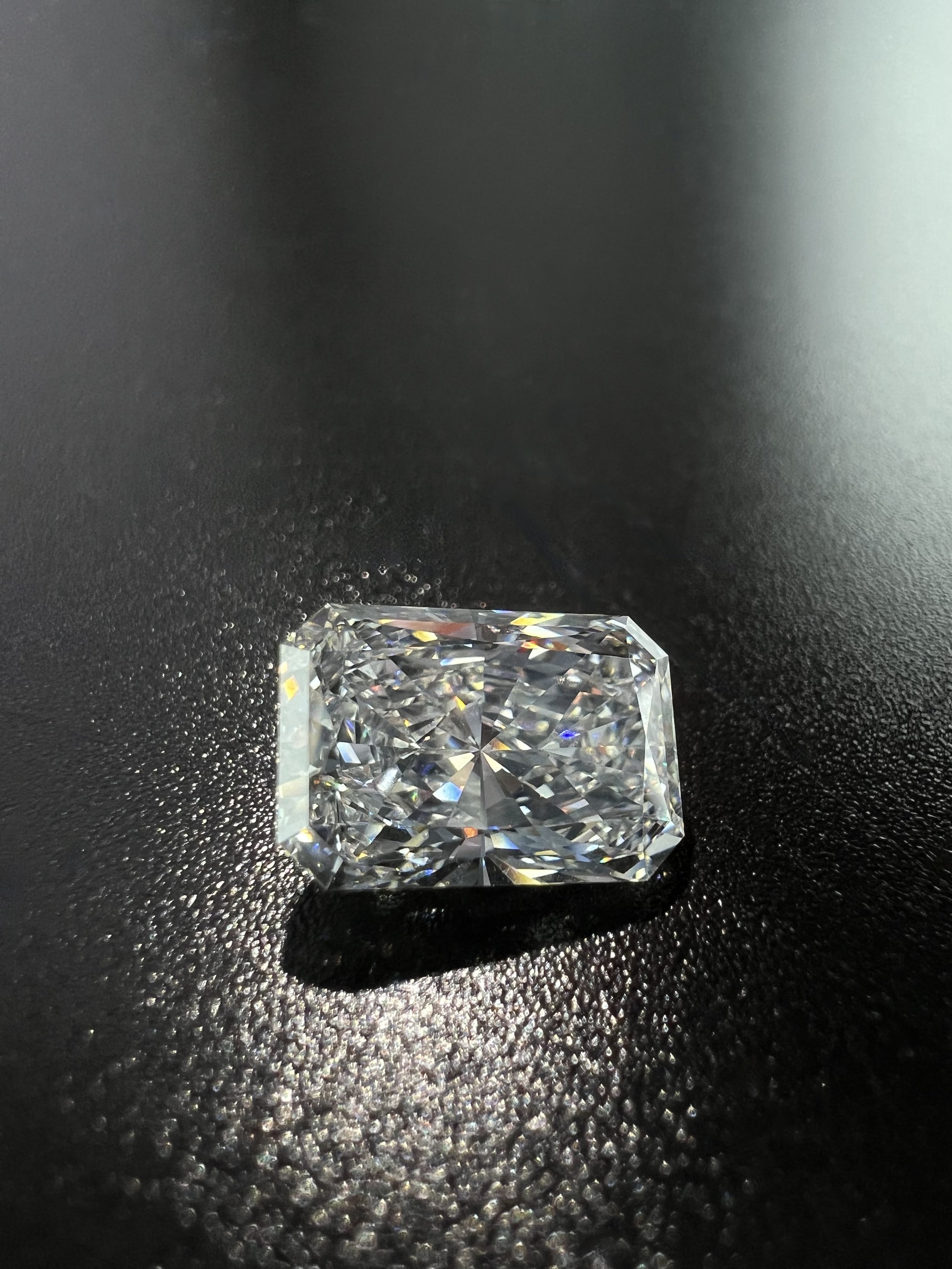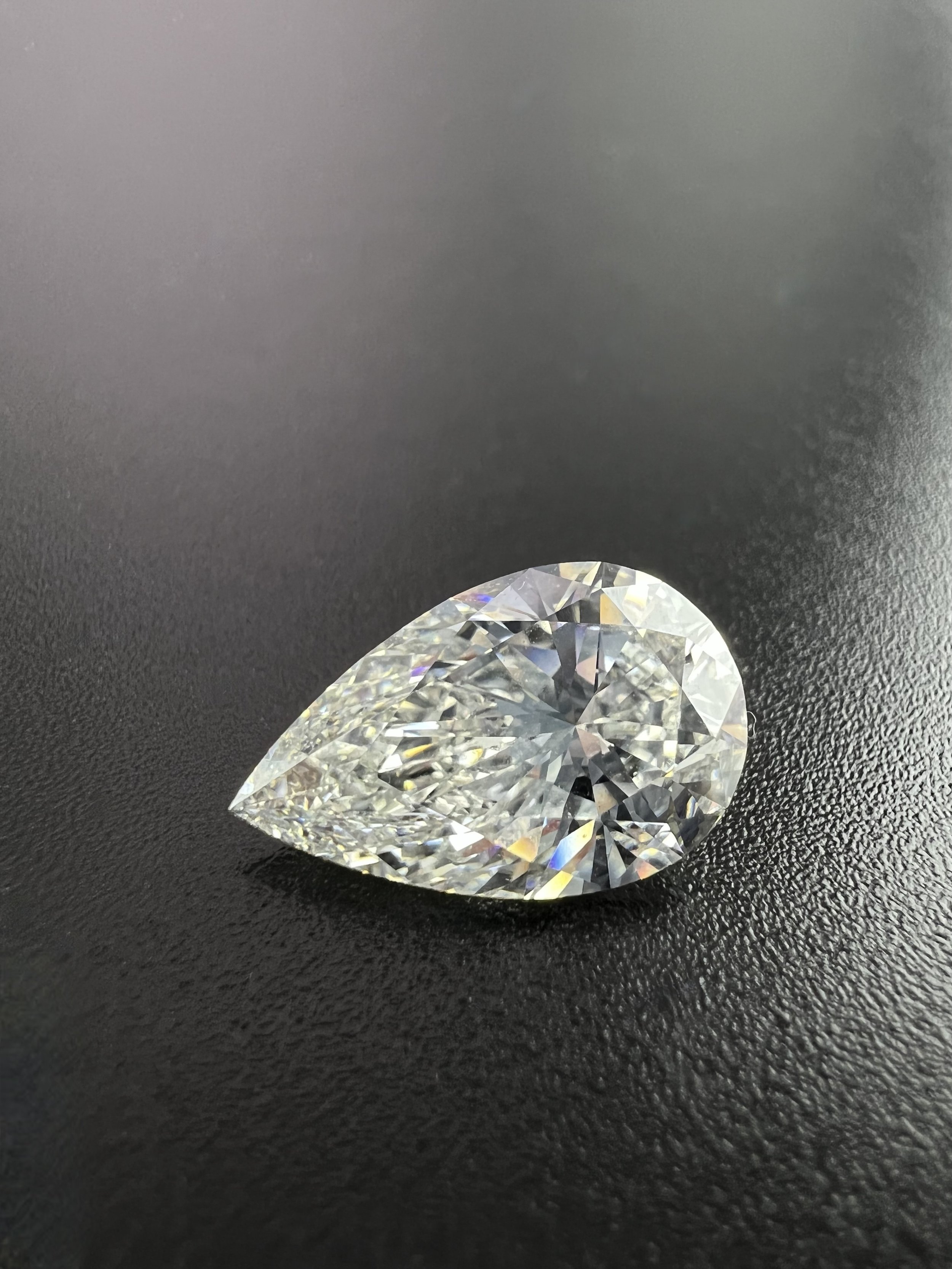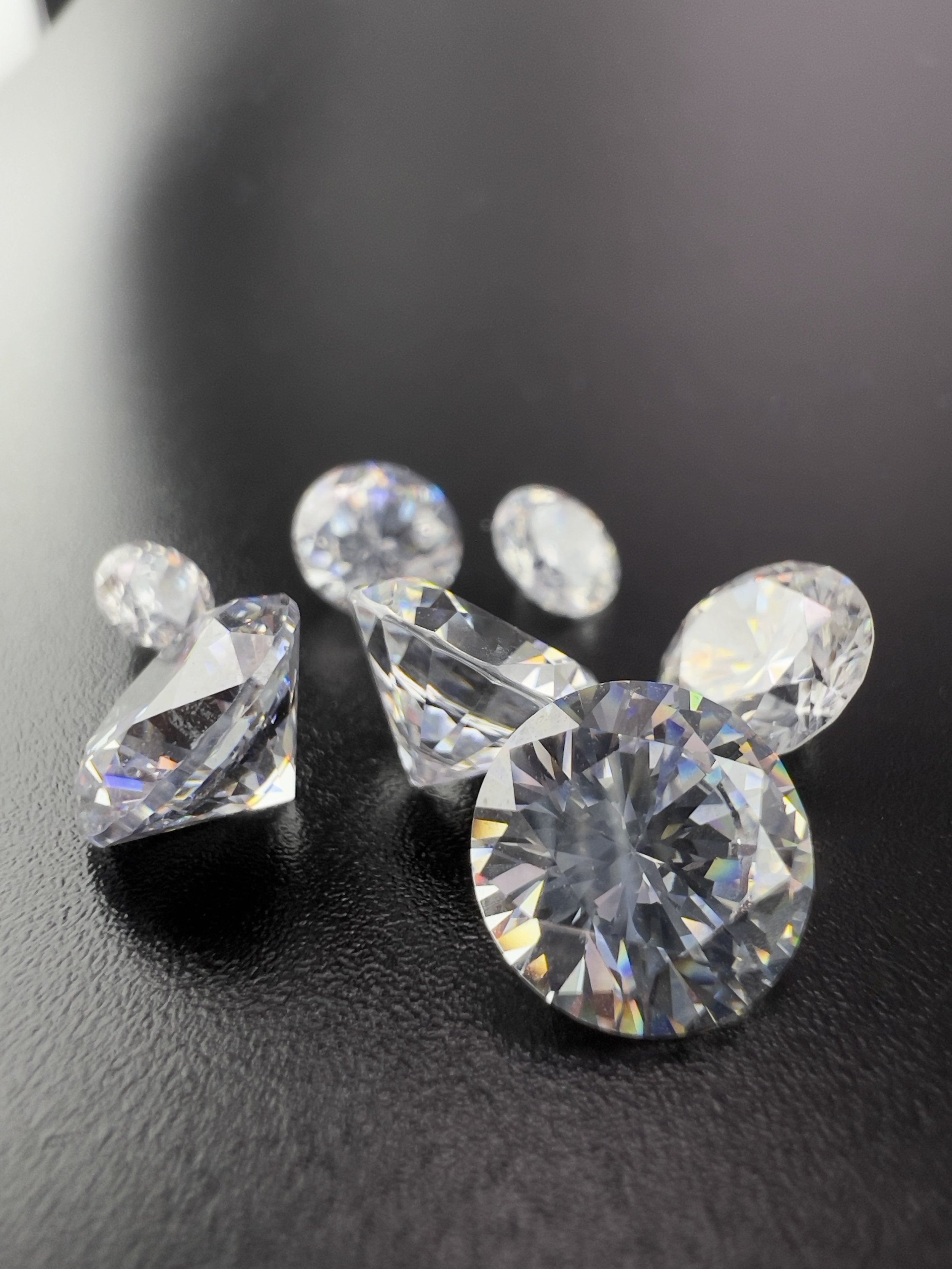
Lab vs Mined
Lab Made Diamonds
How can a diamond be manmade?
Thanks to technological progress, diamonds can now be produced in a laboratory using scientific methods. These lab-grown diamonds possess identical physical, chemical, and atomic characteristics to those found in naturally-formed diamonds.
Benefits to a lab made diamond
Increased purity, enhanced brilliance, and stunning aesthetics
Reduced imperfections
Environmentally sustainable
Economical
Uncommon color variations that occur infrequently in nature
Distinctive look
Sourced from trustworthy and ethical suppliers
Larger carat weights available at a fraction of the cost
What are the benefits of a lab grown diamond?
Lab-grown diamonds can offer a cost-effective alternative to mined diamonds, and as a result, an increasing number of diamond buyers are opting for lab-grown diamonds.
It's worth noting that lab-created diamonds are not the same as cubic zirconia; they have the same physical and chemical properties as mined diamonds, as confirmed by the GIA.
We offer lab-grown diamonds due to high demand, and our customers come from all over the world to explore our range of options. Choosing lab-grown diamonds can also have ethical benefits, such as lower greenhouse gas emissions, reduced waste, and a smaller carbon footprint.
To the naked eye, lab-grown diamonds appear no different from their naturally occurring counterparts. Only by testing the diamond with a specialized lab tester can a jeweler determine if it was created in a lab. Regardless of origin, a diamond is still a diamond, and we prioritize providing our clients with a variety of options.
You can get a better diamond for less money
Save up to 75% compared to earthed mined
Benefits of Lab Made
-
Beauty
The brilliance and sparkle of a lab-grown diamond are indistinguishable from those of a mined diamond. Both types of diamonds exhibit remarkable shine and dazzle.
-
Value
Lab-grown diamonds can be produced in large quantities within just a few weeks, which significantly reduces their cost compared to mined diamonds.
-
Range of Colors
Lab-grown diamonds are not limited to colorless stones; they can also be produced in a variety of colors that are typically rare and costly to obtain from mined diamonds.
Mined Diamonds.
Diamonds that are mined can be discovered in various locations around the globe, located deep within the earth. Every diamond has unique characteristics that differentiate it in terms of the four C's: color, clarity, cut, and carat size. Although there are other factors that distinguish each diamond, the true beauty of a diamond resides within.
-
Diamond color is typically categorized as white or yellow, but there are also rare and unique fancy colors available, such as blue, red, and green. While many diamond buyers prefer colorless or near colorless diamonds, which emit a white appearance in normal lighting, we recommend near colorless diamonds in the range of G-J. This option offers a white look and avoids the higher price tags associated with colorless diamonds in the D-F range, which can cost up to 50% more.
-
Diamond clarity refers to the presence of internal imperfections and external blemishes within the stone. While this may sound concerning, purchasing an "EYE CLEAN" diamond will generally provide a flawless-looking stone. It's a common misconception that flawless or VVS clarity is necessary; in reality, a good quality SI or VS clarity is often sufficient. As long as the imperfections are not visible to the naked eye, the diamond will be of high quality.
-
The cut of a diamond refers to its shape and how well-proportioned its dimensions are. An excellent cut, as determined by GIA (Gemological Institute of America), is typically the most desirable option. Even if a diamond has flawless clarity and a D color rating, its cut is what will make it truly sparkle. Conversely, a poorly cut diamond will not have the desired sparkle, regardless of its size or quality.
-
The carat size of a diamond refers to its weight and is a key factor in how large or small the diamond appears. However, it's important to note that a larger carat weight does not necessarily equate to a better diamond. While a larger diamond may serve as a status symbol or provide a larger appearance, the clarity and sparkle of the diamond are also important considerations.
The diamond's color, clarity, and cut are all critical factors in determining its value and overall appearance. It's possible for a 5-carat diamond with superior quality and cut to look better than a 10-carat diamond with lesser quality.
The choice is yours at LMJ.
We have chosen to display both lab-grown and mined diamonds to demonstrate that there is little to no difference between the two. The physical and chemical properties that make up these diamonds are identical.
The introduction of lab-grown diamonds has transformed the jewelry industry by providing an ethical and sustainable way to produce precious gemstones. The production of lab-grown diamonds has no impact on the pricing of mined diamonds, while offering customers a high-quality alternative at a fraction of the cost.
In the end, whether you choose a lab-grown or mined diamond, both are equally valuable and precious. At LMJ, everyone wins, and we are committed to providing our customers with the best possible options for their jewelry needs.
Diamonds shown to the right and below are a mixture of lab made and mined diamonds.

